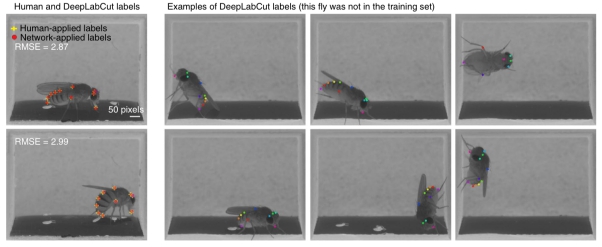
Contained within our brains are all of the thoughts, feelings, memories and possible actions that make us who we are. Starting from the pioneering work of early experimental psychologists over 150 years ago, scientists have developed a series of experimental techniques to test how we perceive, think (our cognition) and act (our behaviour). These types of tests measure many different aspects of brain function, and they are critical in understanding and diagnosing what goes wrong during many different types of neurological diseases. The brain is a biological machine, and to fully explore its detailed function, scientists rely on animal models to advance understanding. The macaque is the closest common animal model for the human brain, both in terms of its cognitive capacity and anatomical similarity. Macaques are smart and highly social, and their brains provide the one of the best avenues through which we can try to understand the immense complexity of our own brain. This is reflected in national and international commitments to focus on primate cognition as we research the foundations of the biological intelligence embodied in the brain.
One aim of the research platform is to create an integrated set of cognitive and behavioural tests for both normal and neurological deficit models in monkeys. We will build standardised tests for perception, movement, cognitive development, social behaviour, learning and memory and emotional regulation. These will adhere as closely as possible to established human clinical tests (CANTAB, NIH Toolbox) wherever possible to maximise clinical relevance. Importantly, we aim to move as much testing as possible into the home environment of our subjects, causing less disruption and stress wherever possible. This is critically important as we start to explore more advanced forms of cognition. By designing and building new home environments that exceed international requirments, we can optimise these spaces for improved enrichment while enabling better automated testing and tracking. Creating a world-class environment to maximise animal welfare and enrichment ensures better quality data, which we believe will result in more rapid scientific progress.
We are extending the development of a flexible automated behavioural testing system. Recognition of subjects will use neural network based face recognition technology (Butler & Kennerley 2018), enabling individual test and reward schedules without human intervention. Where needed, we will integrate this with head-free infrared eye tracking and acceleormeter positional tracking. For markerless full-body tracking, we wish to adapt and optimise pose estimation deep convolutional neural networks (DCNN), where large human training datasets have been demonstrated to aid 3D positional reconstruction in other species (see Fig. 1).

Figure 1 — Example markerless tracking of drosophila (Mathis et al. 2018). The same DCNN can be used on many other species, but will require optimisation and integration to work alongside other behavioural data the platform aims to record.
Finally, we aim to combine these more advanced automated cognititive and behavioural testing systems with newly developing physiological wireless recording technologies. Being able to record activity in the brain without restraint enables the ability to collect far more data per individual in a less invasive way, with a closer link to behaviour.
For scientists and clinical researchers who wish to develop projects that involve perception / cognition / behaviour in non-human primates, we are able to offer support in training and testing. We are combining multiple techniques and behavioural tests, and through collaboration with the primate facility at Oxford University and the NC3Rs (https://nc3rs.org.uk), can optimise and refine your behavioural training and testing.
Optimising the type and amount of behavioural data we obtain, especially in higher cognition, is essential for a deeper understanding of the brain (Krakauer et al. 2017). And this fundamental knowledge is critical to our ability to tackle the major burden that brain disease inflicts on our societies (Poo et al. 2016).
The cognition and behaviour research platform was established at the Institute of Neuroscience in late 2018, and we are actively recruiting research specialists in cognition, software and hardware development. We welcome applications for positions in the platform. If you are fascinated by the brain and have technical skills and curiousity, please get in touch!
Butler JL, & Kennerley SW. (2018). Mymou: A low-cost, wireless touchscreen system for automated training of nonhuman primates. Behavior Research Methods. https://doi.org/10.3758/s13428-018-1109-5
Krakauer JW, Ghazanfar AA, Gomez-Marin A, MacIver MA, & Poeppel D. (2017). Neuroscience needs behavior: Correcting a reductionist bias. Neuron, 93(3), 480–490. https://doi.org/10.1016/j.neuron.2016.12.041
Mathis A, Mamidanna P, Cury KM, Abe T, Murthy VN, Mathis MW, & Bethge M. (2018). DeepLabCut: Markerless pose estimation of user-defined body parts with deep learning. Nature Neuroscience, 21(9), 1281–1289. https://doi.org/10.1038/s41593-018-0209-y
Poo M-m, Du J-l, Ip NY, Xiong Z-Q, Xu B, & Tan T. (2016). China brain project: Basic neuroscience, brain diseases, and brain-inspired computing. Neuron, 92(3), 591–596. https://doi.org/10.1016/j.neuron.2016.10.050